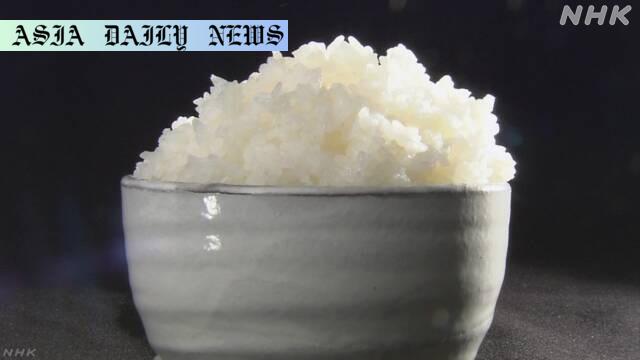Rice Consumption: This year’s rice consumption by foreign visitors to Japan is expected to rise 34% from last year to 70,000 tons.
Japan forecasts a 34% rise in rice consumption by foreign tourists.
Foreign visitors are set to consume 70,000 tons of rice in 2023.
Domestic demand for table rice is predicted to dip by 110,000 tons.
Foreign rice consumption will have minimal impact on overall supply.

Introduction to Rice Consumption in Japan
Japan, known for its rice-driven culinary staples, is witnessing a surge in rice demand among foreign visitors. The Ministry of Agriculture forecasts a 34% rise in rice consumption by tourists, reaching 70,000 tons in 2023. This sharp increase comes as international travel resumes, following the global slowdown during the COVID-19 pandemic. While the influx of foreign visitors contributes significantly to this trend, the ministry assures that its impact on the national rice supply and demand situation will remain limited.
Factors Fueling the Increase in Rice Consumption
The increase in rice consumption stems primarily from a rise in the number of foreign visitors to Japan. The ministry expects over 30% more tourists this year, each averaging a 10-day stay with two rice-based meals daily. With tourists consuming an estimated 78 grams of rice per meal, their overall impact on demand is evident. Additionally, this marks the highest level of rice consumption by foreign tourists since 2010, indicating a new milestone in Japan’s post-pandemic tourism recovery.
Comparing Domestic Rice Demand and Production
Despite the rise in rice consumption by foreign tourists, domestic demand for table rice is projected to decrease by 110,000 tons to 6.63 million tons in the upcoming fiscal year starting in July. Conversely, rice production is expected to grow significantly, increasing from 100,000 tons to 120,000 tons. This balancing act between international and domestic trends highlights Japan’s strategic approach to rice management amid soaring global food prices.
The Limited Impact on Japan’s Rice Supply
Although foreign tourists’ rice consumption is expected to surge, its influence on the overall rice supply remains negligible. Japan’s careful management of agricultural production ensures a stable supply, even amidst rising global demand and inflationary pressures. Moreover, the uptick in visitor consumption aligns with Japan’s broader economic strategy to attract more tourists, showcasing Japanese cuisine as a cultural experience.
Conclusion
As Japan reopens its borders and welcomes an increase in foreign tourists, the rise in rice consumption serves as a testament to Japan’s culinary appeal. The Ministry of Agriculture’s proactive measures to balance domestic production with demand reflect the country’s pragmatic approach to economic revitalization. While the rise in tourist rice consumption is significant, its limited impact on the broader rice supply ensures stability in the staple food market. This steady growth in international consumption not only reflects Japan’s global allure but also underscores its resilience and adaptability in a dynamically changing world.



Commentary
Economic Implications of Surging Tourism
The projected increase in rice consumption by foreign tourists underscores a positive trend for Japan’s economy. With more than 30% growth in tourist arrivals expected this year, the country is on track to recapture its pre-pandemic vibrancy. The economic benefits extend beyond tourism alone, as increased rice consumption reflects a renewed global interest in Japanese culture and cuisine. This trend offers significant potential for Japan to integrate its agricultural sectors into its broader economic recovery strategy.
Balancing Supply and Demand
Interestingly, the rise in rice consumption among foreign visitors comes at a time when domestic demand for table rice is projected to decline. This offers a fascinating intersection of domestic and international demand dynamics. By effectively balancing production levels and ensuring a stable supply, Japan demonstrates its ability to navigate challenging global economic conditions while maintaining internal equilibrium. Such strategic planning serves as an example for other nations grappling with inflation and food security concerns.
Cultural Relevance in Global Tourism
Japanese rice serves not just as a staple food but as a symbol of cultural identity. As more tourists explore Japan, their engagement with traditional dishes highlights the universal appeal of Japanese cuisine. This presents Japan with an opportunity to leverage its rich culinary heritage to attract high-value tourism. By promoting rice-based culinary experiences, Japan can enhance its global soft power while directly benefiting its agricultural economy.
Conclusion
The rise in rice consumption by foreign tourists is a microcosm of a broader trend: the global rediscovery of Japan. Beyond its immediate economic implications, this trend reflects the enduring global curiosity about Japan’s cultural and culinary practices. While challenges exist, such as aligning domestic production with varying demand patterns, the overall trajectory remains highly optimistic. Japan’s ability to adapt and innovate will undoubtedly ensure long-term benefits from such shifts in global tourism and culinary trends.